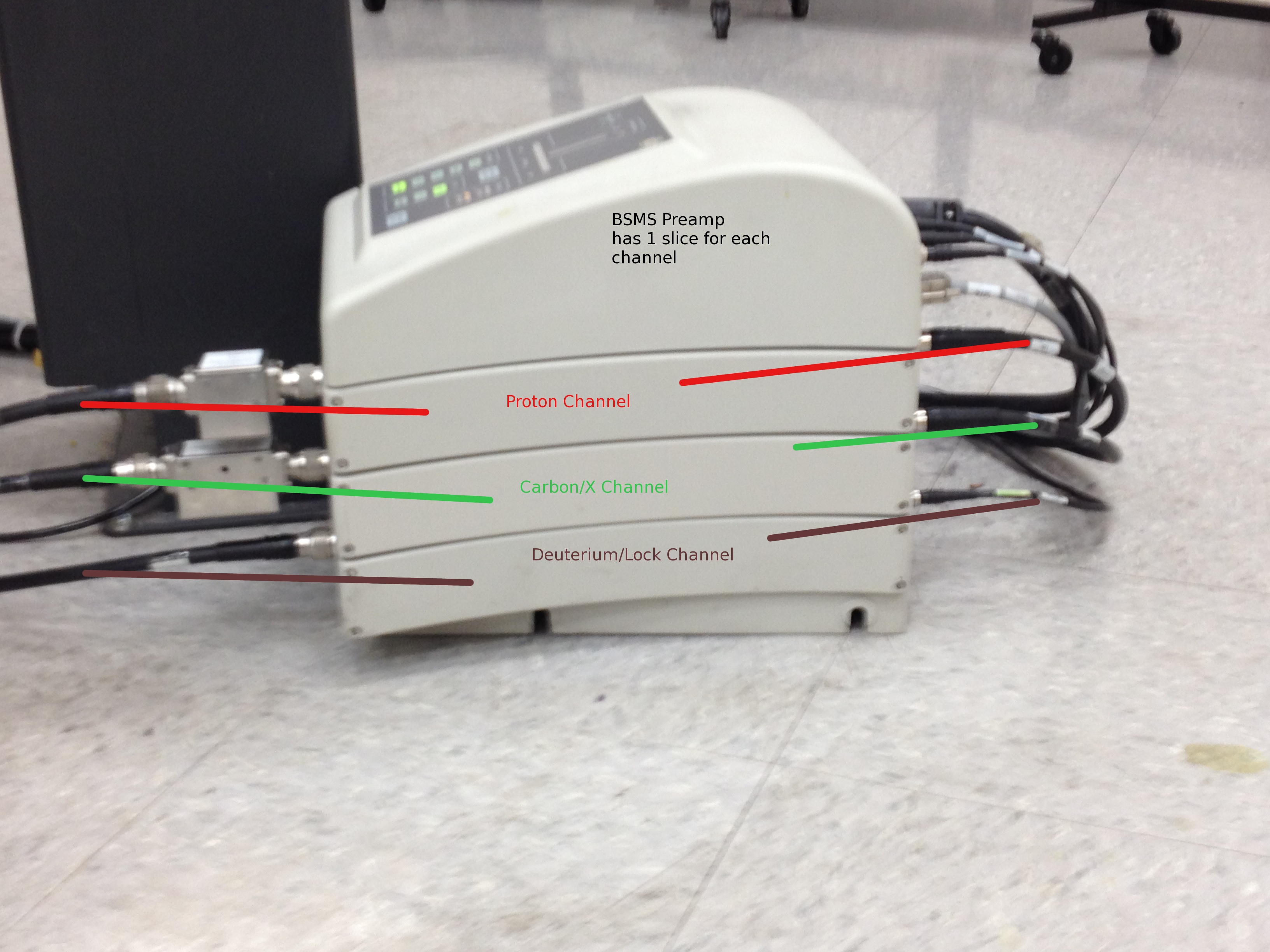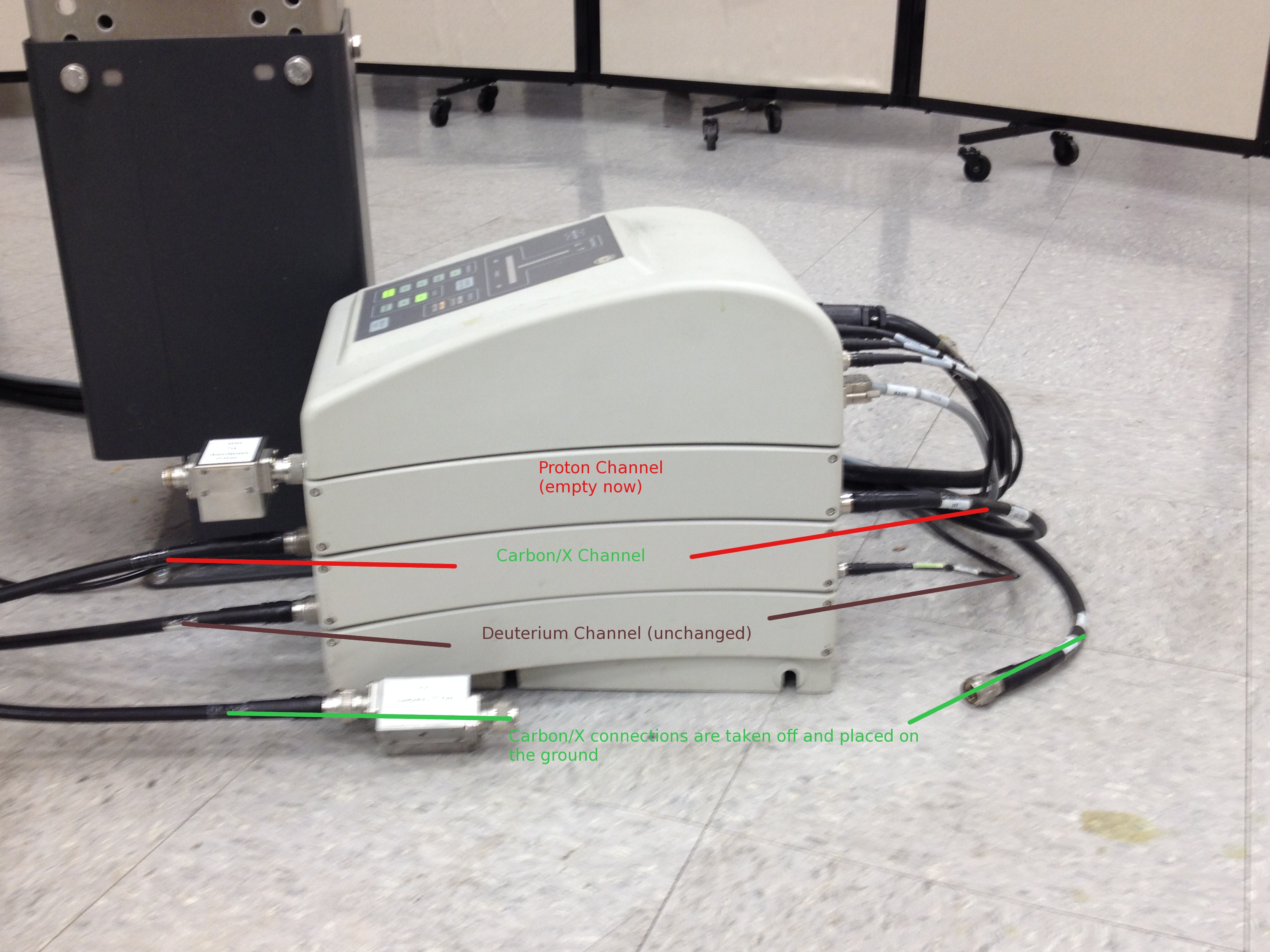In order to run 19F NMR on the Brukers we need to recable. Note the BSMS below has 3 slices which physically
stack on top of one another. We need to disconnect the cables going thru the Proton (RED) slice and connect them
to the Carbon (GREEN) slice below it. The cables which were in the middle Carbon slice are just unplugged and
left on the ground including its filters.

Below is the final configuration you want to run 19F thru the middle slice:
 lock and shim as normal as the deuterium channel is unchanged. Note that 1H and 19F have similar Larmor frequencies eg)400MHz and 360MHz respectively,
and that is why we use the proton tuning capacitors mentioned below
lock and shim as normal as the deuterium channel is unchanged. Note that 1H and 19F have similar Larmor frequencies eg)400MHz and 360MHz respectively,
and that is why we use the proton tuning capacitors mentioned below
- rpar f19.bbo all - read in the parameter file for fluorine expt and run as normal..
- wobb - tuning to 19F is done now on the 1H tuners on probe. The ones that turn and are colored yellow (not the sliders)
- DO NOT FORCE THEM WHEN THEY STOP, ie BE CAREFUL. it can be tricky to find the tuning dip some times as there can be two which show and only one is correct. please ask if you need help.
- rga - sets the receiver gain (rg) which depends on the sample concentration (wait)
- zg - zero memory buffer and go
Data Processing, see Chp 11 of Topspin 1.3 manual (page 143)
- tr - trace command allows to store current FID which can then be processed while the data is still acquiring
- efp - exponential line broadening, Fourier transform and phase (with current params in 'edp')
- Fluorine has a large chemical shift range due to the number of surrounding electrons.
- take into accnt where the peak is expected to resonate according to its functional group
- o1p - set this value close to the expected peak position (eg -100) and rerun above starting from rga
19F_book - Guide to Fluorine NMR for Organic Chemists
19F_chem.shifts - Chemical shifts of typical Fluorine systems

 lock and shim as normal as the deuterium channel is unchanged. Note that 1H and 19F have similar Larmor frequencies eg)400MHz and 360MHz respectively,
and that is why we use the proton tuning capacitors mentioned below
lock and shim as normal as the deuterium channel is unchanged. Note that 1H and 19F have similar Larmor frequencies eg)400MHz and 360MHz respectively,
and that is why we use the proton tuning capacitors mentioned below